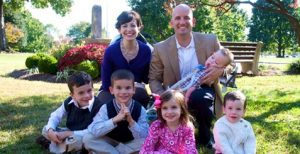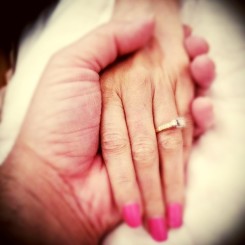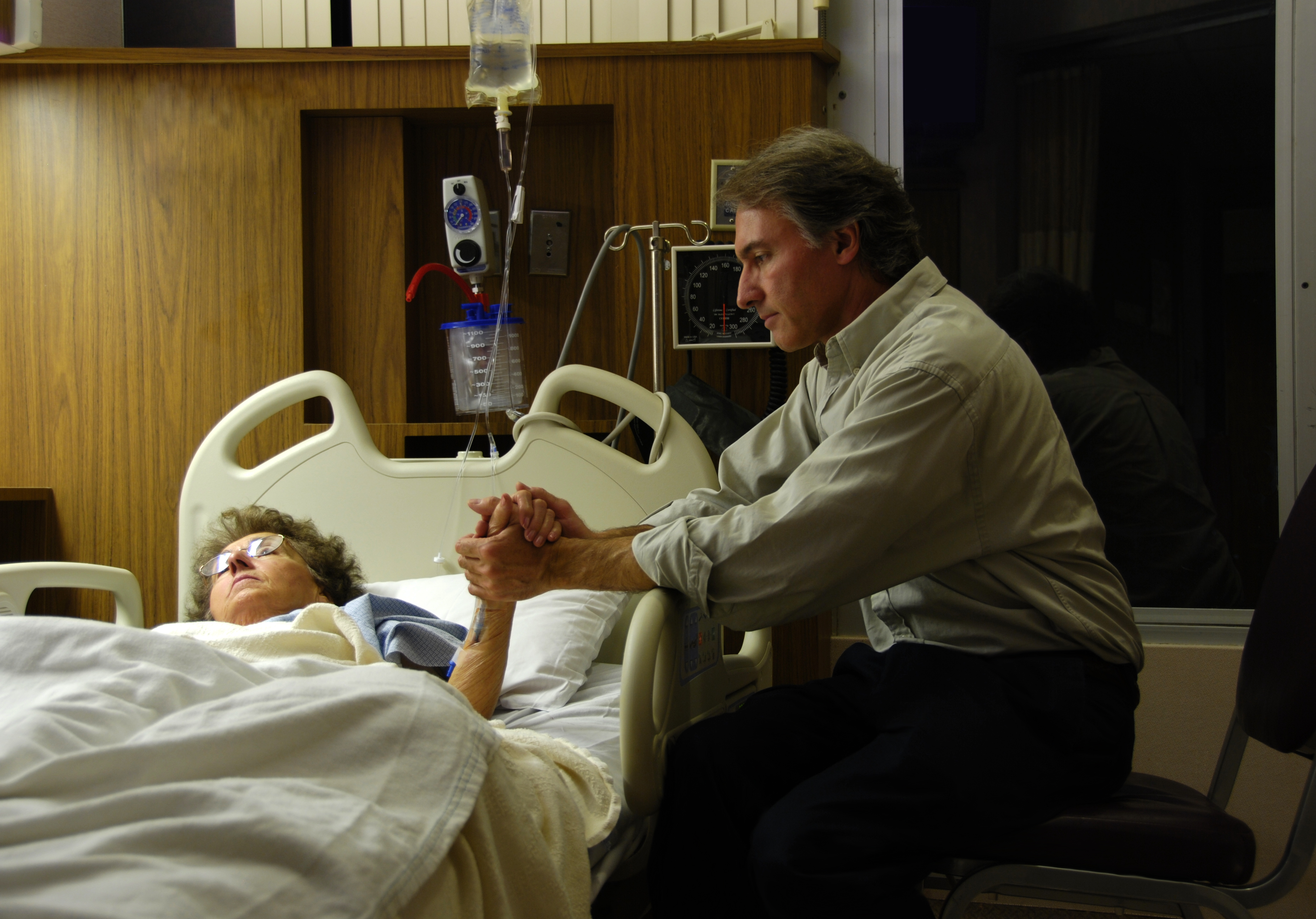A recent study identified 1 in 68 children (1 in 42 boys and 1 in 189 girls) as having autism spectrum disorder. (1) In the United States, most individuals are familiar with the disorder because of the high likelihood that they know someone with autism. The stress of any special needs diagnosis is difficult for a family, and those with autism have unique struggles. In order to identify resources available within our Catholic Church when faced with a diagnosis of autism, we can look to the words of our Holy Father Pope Francis:
When there is no human hope, there is that hope that carries us forward, humble, simple—but it gives a joy, at times a great joy, at times only of peace, but the security that hope does not disappoint: hope doesn’t disappoint (Morning Meditation, 3.17.16, emphasis added).
When I was told that my son was diagnosed with autism, I was the only adult in the room besides the doctor; my son and his two older sisters, ages 5 and 7, were there too. Our son was age three at the time, and his father was traveling out of town on business. I will never forget the whirlwind of thoughts, feelings, and sense of fear that day as I stood in the doctor’s office.
Now, twelve years later, I can look back at those days with the benefit of hindsight and more importantly, grace. Despite the many challenges, and at times heartbreaking pain, I cannot imagine life without my Joey. That fear has been replaced by hope.
I have learned several lessons since that day, and each day brings a new lesson in how to help him grow. Each day also brings new insight for me as a parent, including where I need my own personal and spiritual growth.
The wisdom in our communion of saints is a resource that every Catholic can rely on when working with a child who has special needs. Three themes from our Holy Father’s ministry, which he emphasizes in homilies and in his writing, suggest a three-pronged approach for families with a child on the autism spectrum. Let’s look at each one:
Progress Forward
Many times with a child with autism, it can seem like one step forward, two steps back. The challenge is to have a long-term perspective, recognizing that the small steps you are taking now to provide early intervention will have a future payoff. Because autism often accompanies co-morbidities like anxiety, it can be difficult to manage your own natural worry as a parent, as well as that of your child. Make sure that every so often you take time to review the progress your child has made, and to express your appreciation for all of his or her hard work. It is also important to pat yourself on the back from time to time, because being a parent of a child with autism can be difficult and lonely. It can help to find local support groups in your area so you can share resources and support.
Humility
Frequently, mothers think that they are the only one who can meet their child’s needs. While it is important to recognize the mother’s role, both father and mother have to acknowledge that they cannot meet their child’s needs alone. Humility shows us that we have to rely on others, whether that be hiring in-home therapists, seeking private grant funding or finding other ways to get the support that you need as a family to successfully support your child with his or her diagnosis.
Simplicity
Pope Francis is noted for his simplicity as well as his humility. Sometimes, when a child with autism has an IEP (Individualized Education Program), a treatment plan with multiple medications, therapies both inside and outside the home, as well as the need for structural home modifications, the needs are so great that it can be hard for families to prioritize what is most important. Simplicity means focusing on the most important needs of the child right now, in this moment, and enjoying the many wonderful moments of joy that the child brings. I have chronicled the many funny things that my son has said to me over the years, which have not only made me laugh out loud in the moment but are something I treasure years later as I re-read them.
For families who have a child on the autism spectrum, don’t give up! There is hope, and lessons learned over time and from others can make the journey easier.
(1) https://www.autismspeaks.org/what-autism/prevalence
About the author
Ann O’Keeffe Rodgers is a wife, mother and advocate for those with autism. She lives in Jacksonville, Florida, and is CEO of Hope Springs Florida, a vacation respite home designed for working-class families with a child with autism. Ann can be reached at rodgers_2244@hotmail.com.

 By the time our son Stephen turned seven, we were hoping to adopt another child. To our three birth children, Guy (8), Stephen (7), and Matthew (5), we had already added David (3) and Danny, whose Down syndrome no longer seemed remarkable. He had passed the ripe old age of one and, although he was developing more slowly than our four older boys, he was making strides at his own pace. Other than a small PDA (a patent ductus arteriosusa or small hole in his heart) and the croup which scared us all half to death, he was in good shape physically. (The hole eventually closed, and he outgrew the croup, thank God!) Except for the time I fed him too many carrots and turned his skin orange, we were doing a pretty good job of parenting. Danny had grown into being just another member of the family, and we felt that we could care for one more baby with special needs. Down syndrome did not seem like a disability. It was a challenge which early intervention services helped us to meet.
By the time our son Stephen turned seven, we were hoping to adopt another child. To our three birth children, Guy (8), Stephen (7), and Matthew (5), we had already added David (3) and Danny, whose Down syndrome no longer seemed remarkable. He had passed the ripe old age of one and, although he was developing more slowly than our four older boys, he was making strides at his own pace. Other than a small PDA (a patent ductus arteriosusa or small hole in his heart) and the croup which scared us all half to death, he was in good shape physically. (The hole eventually closed, and he outgrew the croup, thank God!) Except for the time I fed him too many carrots and turned his skin orange, we were doing a pretty good job of parenting. Danny had grown into being just another member of the family, and we felt that we could care for one more baby with special needs. Down syndrome did not seem like a disability. It was a challenge which early intervention services helped us to meet.

 In the fall of 2011, my husband Patrick and I had been married eight years and our family was rapidly growing. Our oldest child had just turned six and we were expecting our fifth child in December. John Paul was born on December 6, 2011. We knew immediately that something was very wrong. The delivery itself was traumatic, during which his arm was broken. When he was finally delivered, he didn’t make a sound. He couldn’t breathe. He was barely moving. He was whisked away to the neonatal intensive care unit. In the days and weeks that followed, we gradually started to understand the severity of John Paul’s condition. When he was 5 weeks old, he was diagnosed with Spinal Muscular Atrophy (SMA). We learned that SMA was a genetic, progressive and terminal neuromuscular disorder. Gradually, every muscle in John Paul’s body would weaken and eventually waste away. Usually death is caused by complications from a common cold because of respiratory weakness. You can imagine how we felt being told that our son would die from complications of a common cold, knowing that we had four children at home, several of whom were not yet adept at covering their mouth and nose when they sneezed or coughed.
In the fall of 2011, my husband Patrick and I had been married eight years and our family was rapidly growing. Our oldest child had just turned six and we were expecting our fifth child in December. John Paul was born on December 6, 2011. We knew immediately that something was very wrong. The delivery itself was traumatic, during which his arm was broken. When he was finally delivered, he didn’t make a sound. He couldn’t breathe. He was barely moving. He was whisked away to the neonatal intensive care unit. In the days and weeks that followed, we gradually started to understand the severity of John Paul’s condition. When he was 5 weeks old, he was diagnosed with Spinal Muscular Atrophy (SMA). We learned that SMA was a genetic, progressive and terminal neuromuscular disorder. Gradually, every muscle in John Paul’s body would weaken and eventually waste away. Usually death is caused by complications from a common cold because of respiratory weakness. You can imagine how we felt being told that our son would die from complications of a common cold, knowing that we had four children at home, several of whom were not yet adept at covering their mouth and nose when they sneezed or coughed.



